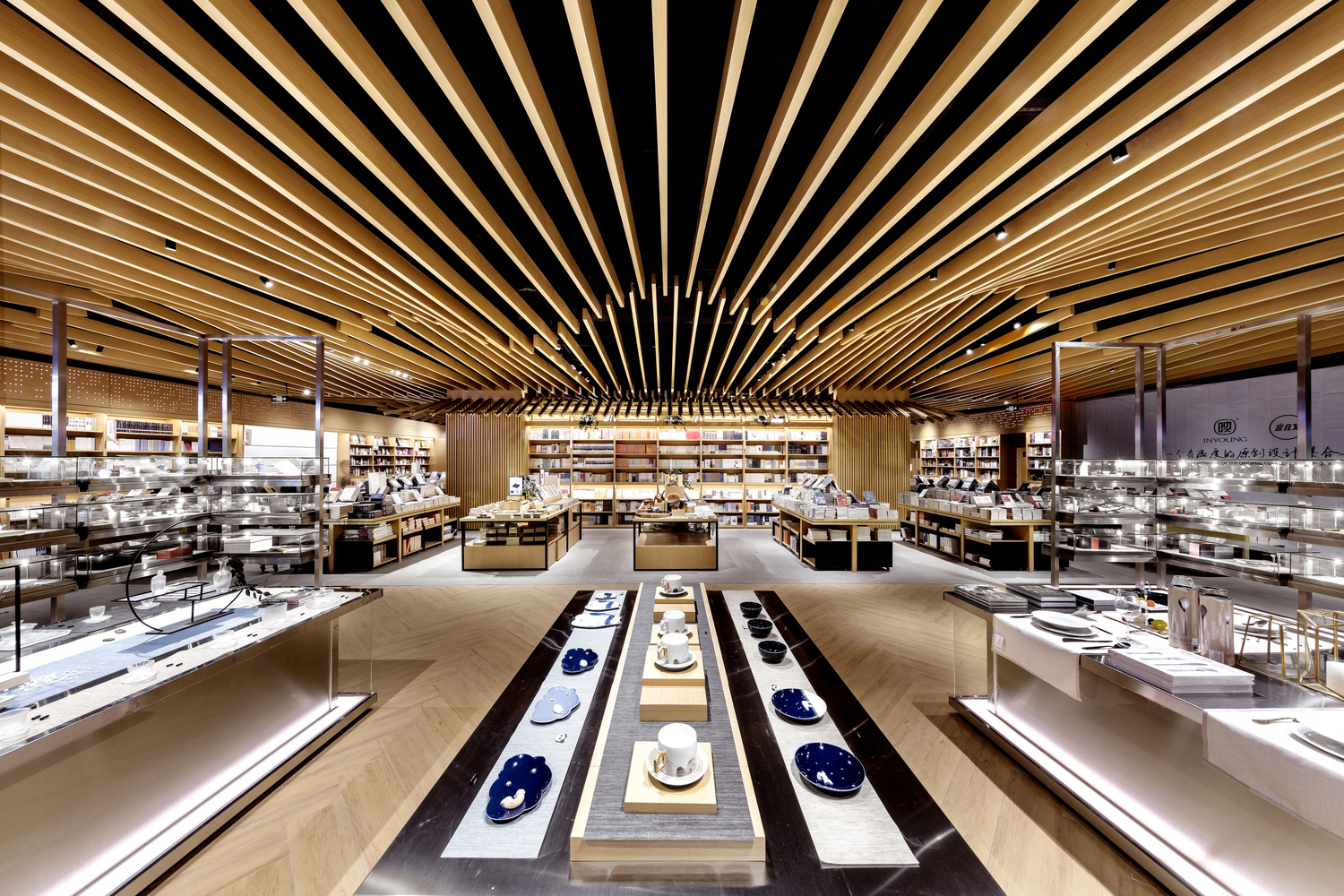China’s brick-and-mortar bookstores are making a comeback
Chinese bookshops nearly died under the assault of ecommerce companies, but they are booming again as cultural centers and recreational spaces where books are just one part of the offering.

On a Wednesday morning in the summer of 2011, the Beijing bookstore Wind in the Pines (风入松书局), a 16-year-old cultural sanctuary, closed its doors for the last time.
“This was once a cultural epicenter of the capital, a spiritual home for many,” mourned one internet user (in Chinese). “Though I knew its days were numbered, I still can’t help but cry on its last day.”
The closure of Beijing’s flagship bookstore was just the beginning of a long road to obsolescence for physical bookstores across the nation. In the early 2010s, China was still on the brink of its digital revolution, accounting for 1% of global online transactions. By 2017, China’s economy had utterly shifted gears: 40% of the world’s digital transactions occurred within its borders, and the prospect of maintaining any brick-and-mortar enterprise during that ecommerce craze seemed like a Sisyphean nightmare.
But now, physical bookstores are coming out of a long winter. Last week, China’s state media reported that bookshops during the pandemic had undergone something of a renaissance: 1,500 brick-and-mortar bookstores closed, but more than 4,000 new ones sprouted up.
The new ones look different from the old. In the past few years, bookshops have begun to bill themselves as multipurpose community spaces, rather than the book havens of old. As the value of traditional bookstores — the wide-ranging selection, the convenient search experience, and the timely arrivals — become wholly subsumed by online retailers, shop owners are looking to cafes and other entertainment and retail businesses for inspiration.
“The revenue for bookstores isn’t from books anymore,” said a Nanjing bookstore owner to TMTPost (in Chinese). “The pressure is now on us.”
The lost decade
From 2002 to 2012, bookshops were in a world of hurt. According to a report by the consulting firm Roland Berger, roughly half of China’s private bookstores closed in that period. In 2010, a year before the demise of Wind in the Pines, its close cousin and neighbor Third Pole Books (第三极书局), China’s largest private bookstore, shuttered after only three years in business. Other famous chains — Silhouette Books (席殊书屋) in Beijing, and Shanghai’s Ming Jun Bookstore (明君书店) and Think Happy Books (思考乐书局) — followed suit in the years after. Even the state-owned Xinhua Books, which enjoys lavish subsidies, struggled to make ends meet (in Chinese).
Then something changed. In 2017, according to Guohai Securities (in Chinese), the annual growth rate of brick-and-mortar bookstores went from negative to positive. Online book retailers, such as Amazon, JD Books, and DangDang, witnessed the flip side of that coin. From 2014 to 2017, the growth rate of China’s online book retailers dropped from a high of 50% to 28%. After years of what many saw as the inevitable demise of the physical bookstore, the trend had reversed. The market for bookstores was expanding.
In 2015, when Amazon opened its first physical bookstore in Seattle, JD Books began to do the same. Encouraged in part by government policies, JD cooperated with 300 offline bookstores to place its books in physical locations. A new industry — a spruced-up version of the old — was emerging, where the value of a bookstore’s physical space was taken to its next logical step.
“The ideal bookstore in my mind doesn’t have to be so big,” said Guān Bō 关波, the general manager of Third Pole Books, at the time of its closure (in Chinese). “Rather, it’s one that allows people to buy books while sipping coffee, doing exercise, or some other activity.”
An “urban cultural complex”
Enter a Yanjiyou — a 4,000-square-meter multistory bookstore chain — in Chengdu, the capital province of Sichuan, today and books are no longer the main attraction. Billed as “urban cultural complexes” (城市文化综合体 chéngshì wénhuà zōnghétǐ), a typical Yanjiyou store offers a wide range of amenities, including cafes, supermarkets, restaurants, art and photo galleries, and furniture designed for community activities.
“Today’s bookstores are no longer just a place to sell books; they’re a cultural complex that brings together a host of business practices,” said Lǐ Jìngzé 李敬泽, vice chairman of the Chinese Writers Association, in 2018 (in Chinese).
In other words, when customers enter a Yanjiyou, they’re not entering a bookstore that also sells other services anymore; they’re entering a service hub that also sells books.
“When I have free time, I like to just lounge around at [the Yanjiyou] bookstore,” explained Yuán Jié 袁洁 (in Chinese), a resident of Chengdu. “While reading, I like to sip a coffee and take a couple of selfies, neither of which really affect my reading.”
Yanjiyou’s rebranding has been enormously successful. In 2014, around the time the growth of online bookstores was slowing down, it opened its first store in Beijing to much acclaim. It has since expanded rapidly into dozens of stores in major cities all across China. Sisyphe Bookstore (西西佛书店), a competitor, has had similar success. It opened 83 branches in 2017 and 180 the year after. Its revenue reached $138 million that year for a growth of 73%.
“By selling a wide range of products,” said Dan Jie 但捷, the chairman of Yanjiyou, in an interview with China News Service (in Chinese), “we bring higher sales to bookstore operators.”
Should Starbucks be worried?
Dan is being proven right. According to the Roland Berger report, coffee and other products now make up 60–65% of gross profits in new bookstores, roughly 2.5 times the amount coming from books. In a survey of 65 bookstore chains in 2018, the online trade journal Bookdao found that only three stores did not sell food or other beverages, and all of them sold stationery and other cultural products alongside books.
Recently, China’s social media platforms have also driven demand for spaces like the multipurpose bookstore complex. On sites such as Weibo and The Little Red Book, influencers who rely on viral posts for a living seek out aesthetic physical spaces to film and take photos. That makes social outposts like bookstores — situated in the interstitial space between the home and the office — perfect for Chinese millennials and Gen Zers, as well as older cultured bookworms. The sociologist Ray Oldenburg called such venues the “third place,” a term that Starbucks later popularized. Bookstores are becoming China’s third place — and Starbucks should be worried.
To watch the revival of China’s bookstore industry is to watch the final production of a play that has been rehearsed to perfection: Much of the arduous process — the changes in business structure, the failed ventures, the crisis of purposes endured and overcome — worked itself out away from the public eye.
“People say that a city must have a bookstore, but no one seriously thinks about what the city must do to keep a bookstore when it is about to shut down,” said the owner of Green Garden Books (高木书店).
But the final act is now here for all to enjoy.






